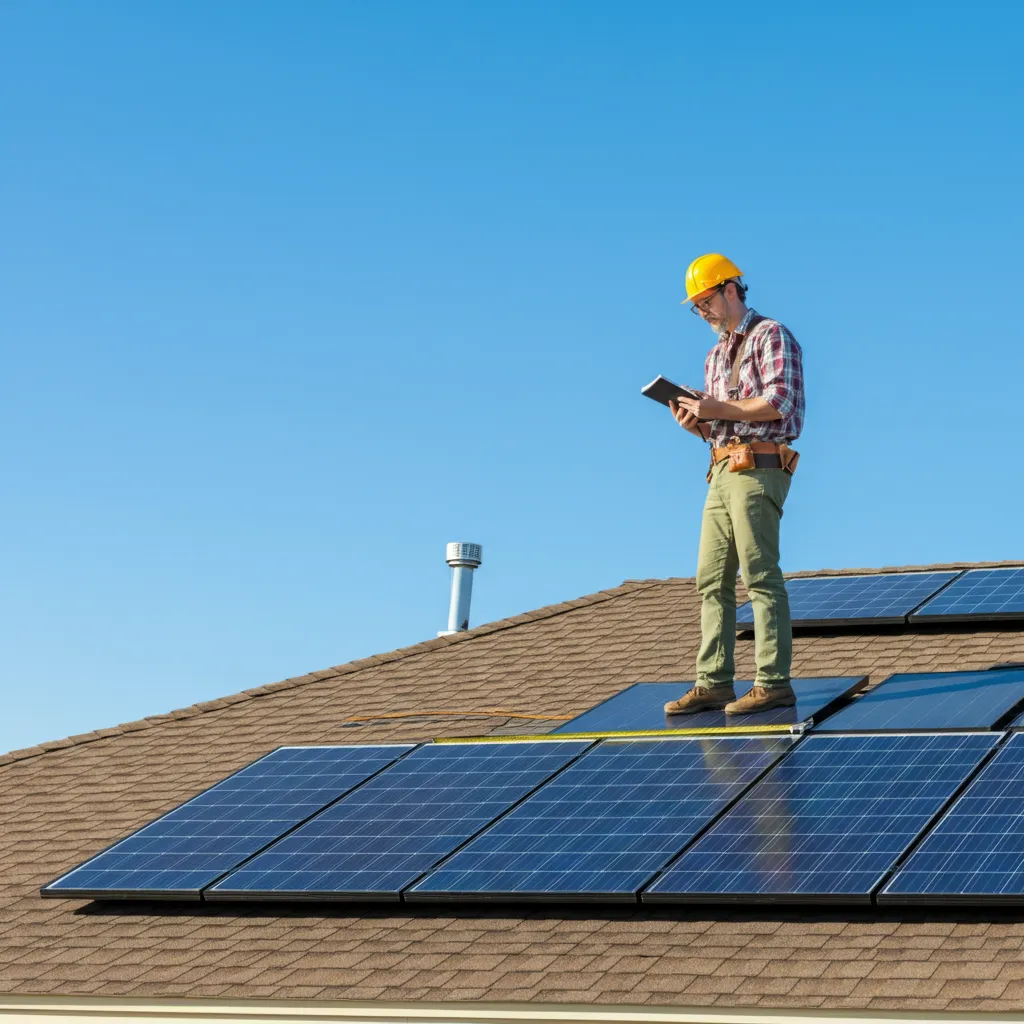
Understanding your roof’s pitch is essential for everything from choosing the right roofing materials to calculating solar panel placement. Whether you’re a DIY homeowner trying to replace a few shingles, a solar energy enthusiast planning an installation, or a roofing professional fine-tuning your craft, learning how to measure roof pitch accurately is a fundamental skill.
This step-by-step guide simplifies the process, helping you confidently measure roof pitch while avoiding common pitfalls. By the end, you’ll understand what roof pitch is, why it matters, and how to measure and interpret it effectively.
What is Roof Pitch?
At its core, roof pitch—also referred to as roof slope—is a measurement of a roof’s steepness or incline. It’s expressed as a ratio of vertical rise to horizontal run, typically in the form of “X-in-12.” For example, a 4/12 roof pitch means the roof rises 4 inches in elevation for every 12 inches of horizontal distance.
Why Roof Pitch Matters
Understanding your roof pitch is important for:
- Selecting roofing materials and ensuring proper water drainage
- Designing structures to accommodate snow loads or wind forces
- Determining the placement and angle of solar panels
- Assessing costs for roof repairs or replacements
With this in mind, let’s move on to how pitch is measured!
Tools You’ll Need to Measure Roof Pitch
Before you start, make sure you have the right tools on hand. These include:
- A measuring tape for accurate dimensions
- A 12-inch level (one with clear, flat edges works best)
- A bubble level to ensure accuracy
- A protractor or online angle/roof pitch calculator (for more precise calculations)
- A pencil and notebook (or a notes app on your phone)
- Ladder (if you need to measure directly from your roof)
- Optional safety gear such as non-slip shoes and a harness
How to Measure Roof Pitch
Knowing how to measure roof pitch is all about following the right method. Below are two primary ways to measure it—one from the roof itself and the other from inside your attic.
Method 1: Measuring Roof Pitch From the Roof
If you’re measuring from the roof directly, safety should be your top priority. Ensure your ladder is secure and your shoes provide good traction. Here’s how to proceed:
- Set Up Your Level:
Place a 12-inch level flat on the roof. Position it horizontally so that one end is touching the roof surface.
- Measure the Rise:
From the level’s edge resting on the roof, measure vertically to the roof itself. Use the measuring tape to record the distance.
- Calculate the Pitch:
Take the rise measurement you just recorded and note it as the numerator. Since the level represents a 12-inch span, the denominator of your pitch ratio will always be “12.” For instance, if the rise is 6 inches, the pitch is 6/12.
- Simplify, if Necessary:
Roof pitch can be expressed as a simplified fraction or left as “X-in-12.” For extreme accuracy, you can convert this to an angle (we cover that below).
Method 2: Measuring Roof Pitch From Inside the Attic
For sloped roofs with accessible attics, this method is safer and often more convenient:
- Locate a Rafter:
Find a stable rafter that runs along the slope of the roof.
- Hold Your Level Horizontally:
Like the first method, ensure the level is horizontally aligned along the rafter.
- Measure Rise and Run:
Measure the rise against the rafter at the 12-inch mark of your level. Write these measurements down.
- Record Your Pitch Ratio:
Use the same format as above—express the rise as the numerator and “12” as the denominator.
Optional Step: Convert Pitch Ratio to Degrees
If you also need the roof pitch in degrees (e.g., for solar panel alignment), use a pitch-to-degree calculator or consult an online conversion chart. For example:
- A 4/12 pitch equals 18.43 degrees.
- An 8/12 pitch equals 33.69 degrees.
Common Mistakes to Avoid When Measuring Roof Pitch
Even a straightforward task like roof pitch measurement has room for error. Here are some pitfalls to steer clear of:
- Ignoring safety precautions—Always use secure ladders and safety gear when working on the roof.
- Incorrect level placement—Ensure the level is perfectly horizontal before measuring rise.
- Estimating instead of measuring—Small errors in measurement can lead to significant inaccuracies when scaling up for larger roofs.
- Skipping checks—Double-check your measurements to confirm your results.
Practical Examples for Better Understanding
Here’s an example to solidify your understanding.
- Suppose you measure a rise of 5 inches over a 12-inch horizontal distance. Your roof pitch is 5/12.
- Using a roof pitch calculator, you find this equals approximately 22.62 degrees.
- Knowing this, you determine your roof is ideal for certain kinds of asphalt shingles but not suitable for materials like slate tiles due to the reduced drainage slope.
Factors That Can Affect Roof Pitch Measurements
Keep in mind that various factors can affect the accuracy of your measurements:
- Uneven roofs—Over time, roofs can sag or warp, creating inaccuracies.
- Weather conditions—Snow, ice, or excessive debris can impede measurement efforts.
- Tool calibration—Always ensure your level and measuring tape are accurate.
If these factors are at play, consider consulting a roofing professional for a thorough analysis.
Master the Art of Roof Pitch Measurement
Accurately measuring roof pitch is a skill that can benefit homeowners, solar enthusiasts, and professionals alike. Whether you’re calculating pitch for a solar energy system, remodeling your roof, or estimating project costs, the key is precision and proper technique.
If you’re a DIY enthusiast or budding professional looking for more tips or advanced tutorials, join one of our dedicated roofing workshops or access free resources on [your website link].
Now that you know how to measure roof pitch, what’s your next project? Share your plans in the comments!






